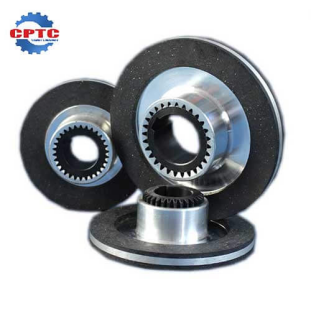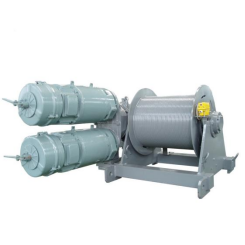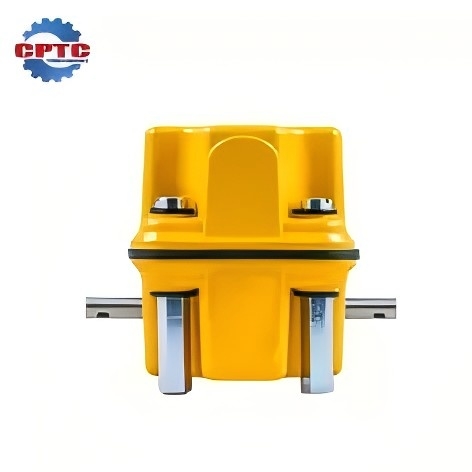What is a Crane Cabin?
A crane cabin is an enclosed compartment designed to accommodate the crane operator. It provides a safe and controlled environment for the operator to monitor and control the crane’s operations. Typically equipped with control levers, displays, and other instrumentation, the crane cabin enables operators to safely and efficiently oversee lifting operations.
Crane cabins come in various types, including tower crane cabins and overhead crane cabins. Tower crane cabins often feature thick steel plating and a spatial capsule design, offering a comfortable and ergonomic workspace. Crane cabins play a critical role in ensuring the safety and efficiency of crane operations, especially in hazardous environments or during complex lifting tasks.
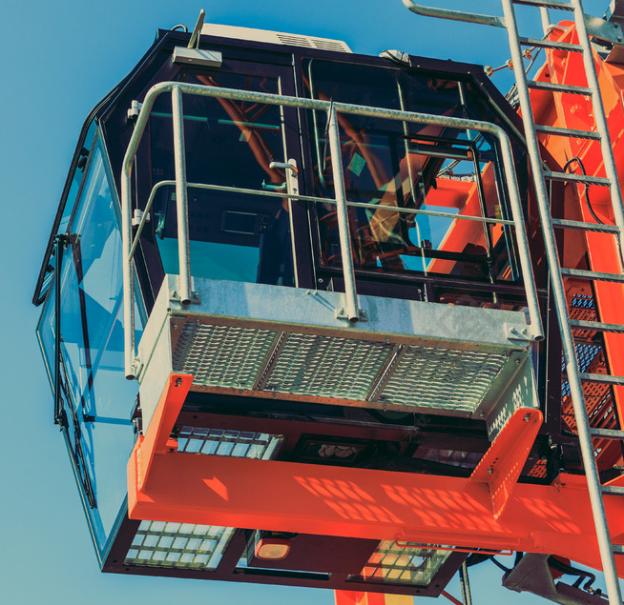
Advantages of Crane Cabins
Crane cabins are essential components of lifting and transportation machinery that ensure the safety of crane operators. A human-centered design for the operating environment of crane cabs is crucial for ensuring the safety of operators, as it not only improves work efficiency and the operating environment but also helps crane operators maintain a good working state, contributing to overall safety.
Wide Field of Vision: Tower crane cabs are typically located at the same height as the crane arm, and the high position and large windows provide a clear view of the work area. This allows operators to have a comprehensive view of the construction site, ensuring safe and accurate operations.
Convenient Operation: Equipped with advanced control systems and monitoring equipment, crane cabs enable operators to precisely control every movement of the tower crane using joysticks and buttons. This design makes operation more convenient and improves work efficiency.
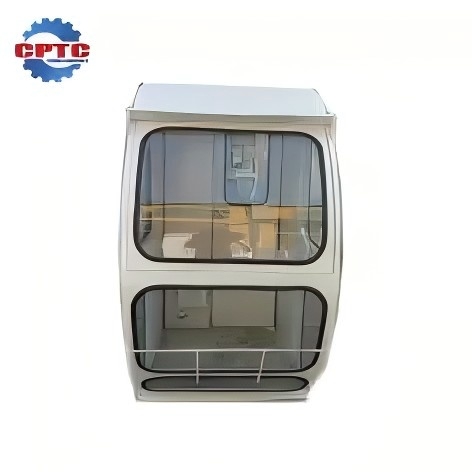
Easy Maintenance: The overall structure of tower cranes is relatively simple, making maintenance and servicing more convenient. Due to the simple structure, the failure rate is lower, reducing maintenance costs and time.
High Safety Performance: The cab provides a protective barrier against falling objects, extreme weather conditions, and other hazards. High-definition cameras and various sensors (such as azimuth, tilt, and wind speed sensors) on the cab provide real-time data on the operating environment and safety, helping operators make informed decisions and ensure safe operations.
High Comfort: The human-centered design of the cab, including comfortable seating, good visibility, and side-sliding windows for cleaning, as well as a standard section rest platform, enhances operator comfort and reduces fatigue.
Essential Safety Principles for Crane Cabins
As a core component of a crane, the cab plays a crucial role. It is like the helm of a crane, not only providing a safe working environment for the operator but also serving as the central station for the operator to control and monitor the entire lifting process. Safe operation of the crane cab is a crucial measure to protect the operator.
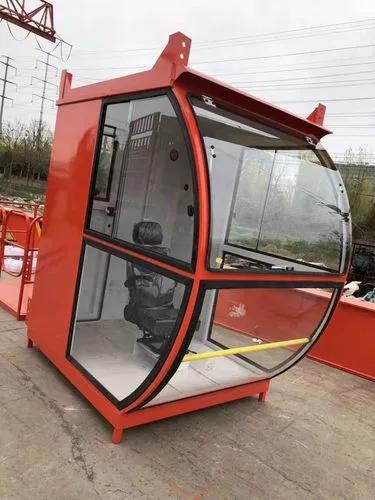
Cabin Cleaning and Maintenance
- Regular Cleaning: Regular cleaning of the cabin is essential to remove dirt, debris, and spills that can create hazards.
- Inspection: Conduct regular inspections to identify and address any potential safety issues, such as worn wiring, damaged controls, or faulty equipment.
- Maintenance: Schedule routine maintenance to ensure the cabin’s components are in good working order. This may include lubrication, replacement of worn parts, and calibration of instruments.
Cabin Ventilation and Hygiene
- Ventilation: Ensure adequate ventilation to prevent the buildup of harmful gases, fumes, and dust.
- Temperature Control: Maintain a comfortable temperature within the cabin to prevent heat stress or cold stress.
- Hygiene: Promote good hygiene practices, such as regular handwashing and cleaning of surfaces.
Safe Cabin Operation
- Operator Training: Ensure that all operators are properly trained in the safe operation of the crane and the specific features of the cabin.
- Pre-Operational Checks: Conduct thorough pre-operational checks of the cabin and crane before each shift.
- Safe Lifting Practices: Adhere to safe lifting practices, including load limits, proper rigging techniques, and avoiding overloading.
- Emergency Procedures: Develop and practice emergency procedures, such as evacuation plans and emergency stop procedures.
Use of Safety Belts
- Mandatory Use: Enforce the mandatory use of safety belts by all operators.
- Proper Fit: Ensure that safety belts are properly fitted and adjusted to provide adequate restraint.
- Regular Inspection: Inspect safety belts regularly for wear and tear and replace them as needed.
Common Maintenance Issues for Crane Cabins
The safety of both operators and equipment hinges on the proper functioning of a crane cab. Let’s delve into common malfunctions and their solutions to ensure safe and efficient crane operations.
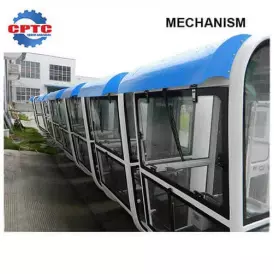
Common Problems:
- Crane Controller Failure: If the crane controller malfunctions, immediately stop the crane and inspect the controller’s circuit and wiring for any abnormalities. If replacement or repair is necessary, contact a qualified technician.
- Crane Cooling System Malfunction: Stop the crane and check the coolant level and quality in the cooling system reservoir. If necessary, contact a qualified technician for replacement or repair.
- Crane Electrical System Malfunction: Stop the crane and inspect the electrical system for proper operation. If necessary, contact a qualified technician for replacement or repair.
- Crane Traveling System Malfunction: Stop the crane and inspect the traveling system components such as drive chains, motors, sprockets, and bearings. If necessary, contact a qualified technician for replacement or repair.
- Excessive Load: Always observe the crane’s rated capacity and operating limits to prevent overloading.
- Excessive Speed: Control the crane’s speed to avoid exceeding the rated speed and prevent accidents.
Solutions:
- Adhere to the Operating Manual: Strictly follow the crane’s operating manual and perform regular inspections and maintenance.
- Seek Professional Assistance: In case of a malfunction, stop operating the crane immediately and contact a qualified technician for diagnosis and repair.
- Maintain Vigilance: Constantly monitor the operating conditions and make necessary adjustments to ensure safe and stable operation.
By following these essential safety principles, crane operators can significantly reduce the risk of accidents and injuries. It is crucial to prioritize safety in all aspects of crane operations, from the design and construction of the cabin to the daily practices of the operators.
As one of CPTC’s core products, the crane cab has gained widespread market recognition for its exquisite craftsmanship and exceptional performance. The cab features a well-organized control layout for easy operation, coupled with an advanced safety protection system to ensure the safety and reliability of every operation, making it a trusted choice in the aerial work industry.
Related Products
Brake Disc for Tower Crane Motor
Rapid Reaction
High Durability
Tower Crane Trolley Device
Multiple functions
Intuitive operation
Tower Crane Hoisting Device
Smooth operation, precise control
Highly adaptable
DXZ Series Multi-functional Limit Switch for Tower Crane
Multiple functions
Intuitive operation

